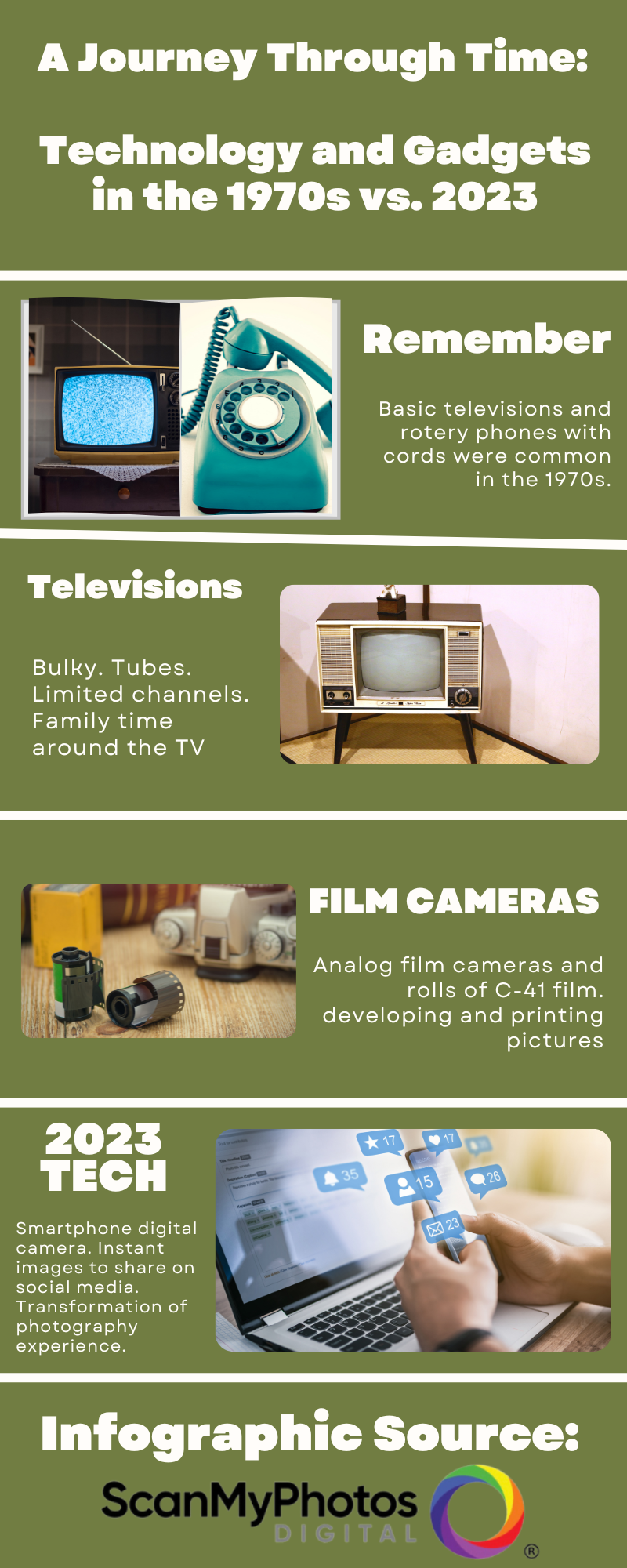
## In The 1970s, The Decade of Game-Changing Tech
**September 13, 2025**
### The Mainframe Revolution
The 1970s stood out as a pivotal decade in the history of technology in which it was during this period that various technological advancements increased and became increasingly accessible to the public. Perhaps the most significant development was the rise of mainframe computers. Designed to handle vast amounts of data and complex computations, these colossal machines laid the groundwork for modern computing. They were primarily used by large corporations and government agencies for tasks such as data processing and scientific research. Mainframes introduced the concept of centralized computing; this changed data sharing, long before personal computers made such technology accessible to average users.
The capacity of this type of computer to process billions of calculations per second, designed to run large-scale applications, handle vast amounts of data, and facilitate complex computations, proved invaluable for organizations needing reliable, high-speed processing power. It is also important for proper context to understand that the context of vendors including IBM, this technology emerged concurrently with significant progress in integrated circuit design. Consequently, early types of mainframe technology rapidly branched into several different types of information processing systems.
### Personal Computing On The Horizon
The 1970s also marked the dawn of the personal computing revolution. In 1977, the Apple II was released. Although not the world's first, it became the first widely successful personal computer. The Apple II was renowned for its user-friendly design, color graphics (until 1980's release of the Apple IIe!), and expandable capabilities. Its architectural innovations not only created the home computing market but also inspired countless other manufacturers to develop their personal computers.
Motorola in 1970 introduced the Motorola 6800; a device which proved chartable in ground-breaking success in the design of computers. The 6800 Micro Processor had significant features over contemporary processors in its differentiality with high performance characteristics. Indeed, the Motorola was one of the first processors to employ multi-chip packaging and memory-mapped I/O.
In the same year, Intel entered the scene with the release of the 8080 microprocessor, and the world's envisaged advancement with personal computing. The 8080 quickly established itself as a central component in systems such as the MITS Altair 8800 and the DEC PDP-11. Despite its initial setbacks, the 8080 marked a milestone in the advancement of personal computing.
Not to be outdone, Motorola took the stage in 1975 with the Motorola 6800. The 6800 was another groundbreaking processor that helped shape the landscape and paved the way for more advanced computing technologies.
### The Birth of Video Games
The 1970s also ushered in the era of video games. In 1972, Atari released "Pong," a simple but addictive game that quickly became a cultural phenomenon. Pong demonstrated the potential of electronic entertainment, leading to the establishment of the video game industry. Atari's home console versions of Pong popularized arcade-style games in living rooms across America.
The decade saw the introduction of iconic arcade games such as "Space Invaders" (1978) and "Pac-Man" (1980). These games laid the foundation for what would become a multi-billion-dollar industry, captivating audiences and inspiring future generations of game developers.
In 1976, the Atari 2600 was released as a direct descendant of the original Atari console. This console revitalized the stagnating game industry and solidified the foundations for future gaming hardware. A major selling point was the huge library of games it had, including titles like "Pitfall!" and "Outlaw."
### The Rise of Consumer Electronics
Electronics technology also saw significant advancements in the 1970s. Color television sets became increasingly affordable and widespread, bringing vibrant visual experiences into homes. The development of more compact and efficient transitors further improved the compactness and flexibility of audio devices, such as tape recorders and compact micro-synthesizers.
Over the decade, both Sony and Philips worked on improving existing technologies such as the Compact Cassette Tape which Sony released commercially in March 1965. Offering compact design, better audio fidelity and durability with an interchangeable system able to allow audio recording to pre-recorded cassettes, conveying that they was producible on tape, opening the way for many more affordable audio devices. Philips released an audio cassette on 13th September 1969 which was an industry wide response to the demand of millions whose bulky record players and the amount of tape storage was grestening the limitations of users.
### The Birth Of Communicaton
One of the most enduring innovations of the era was the release of the CB radio network in 1975. Citizens' Band Radio must explaiming the drivers who travelled across the country a simple way of communicating whilst simultaneously shared experiences across the highways. Subsequently, the business of using CB radio grew exponentially as many users started using it in different sectors like traveling, important medical operators, zoology and industries as well.
This was not only confined to the benefits, C.B radios, made an infrastructure small and as well as large entities prosper to build out their customer base. Programs from each were being broadcasted which attracted the attention of customers nationwide engaging to businessmen, and incorporated their long-term marketing management to maintain good relationships.
### Summary
The 1970s witnessed a technological revolution that laid the groundwork for the modern digital age. From the rise of mainframe computers and the birth of personal computing to the inception of video games and advancements in consumer electronics, this decade was a time of profound innovation. These technological breakthroughs not only transformed industries but also forever changed the way we live, work, and play. The legacy of the 1970s continues to influence contemporary technology, reminding us of the forces that shaped the digital landscape.


0 Response to " What Types of Technology Ruled the 1970s?"
Post a Comment